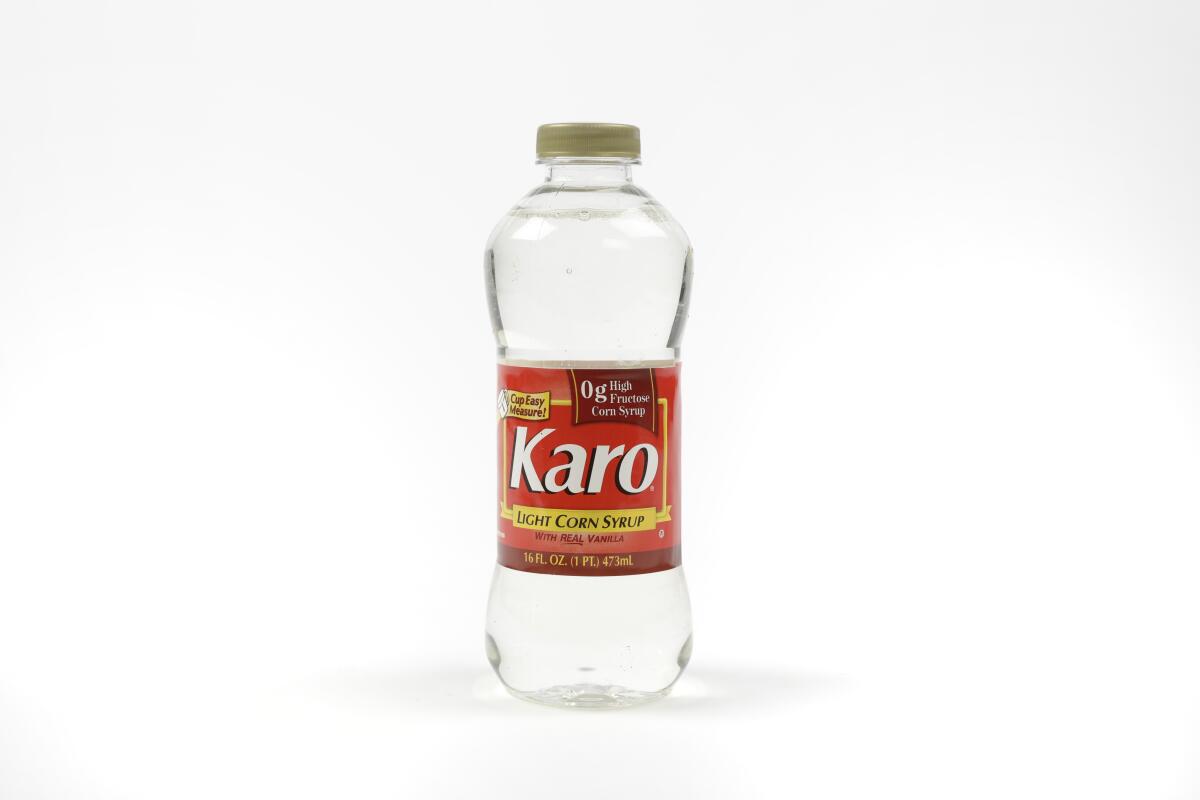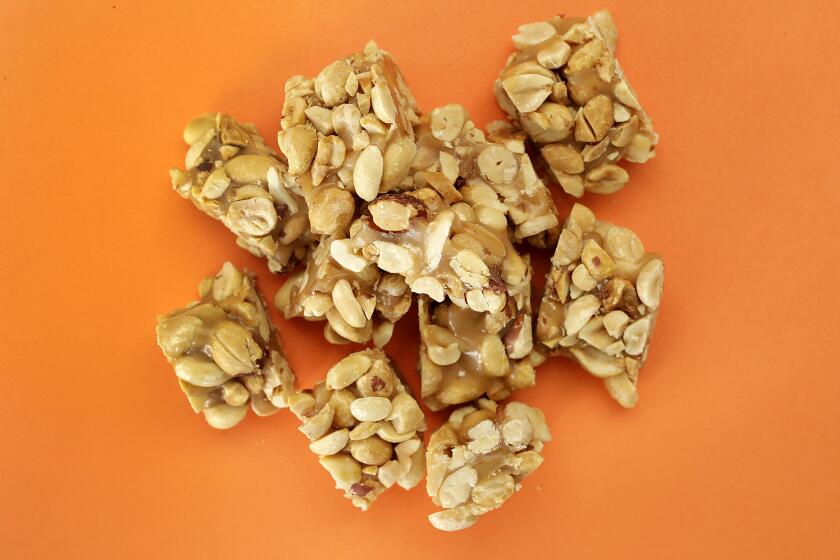We need to talk about corn syrup

- Share via
The words “corn syrup” elicit strong reactions from just about everyone. It’s an ingredient that’s essential for your Thanksgiving pecan pie, but beyond that, most people don’t know how else to use it, much less want to use it because of years of negative press about high-fructose corn syrup, which is different from regular corn syrup.
Now, stick with me here: Scientifically, regular refined white sugar is sucrose, a compound made up of equal parts glucose and fructose. Regular corn syrup is 100% glucose. High-fructose corn syrup, as you might ascertain from the name, converts a lot of the glucose into fructose (the resulting syrup is not sucrose, though, because the fructose is in a higher proportion to the glucose). This is done via an enzymatic process, and it makes HFCS sweeter. And while your body actually absorbs glucose faster, which raises insulin levels quicker, than both sucrose or fructose, it’s the latter that gets the bad rap because your liver has to work harder to digest it. Fructose, when eaten in large quantities, also can raise blood triglyceride levels, your risk of metabolic syndrome and your risk of developing fatty acid disease.
Two easy recipes for candy bars show that making your own candy — just in time for Halloween and the holdiays — is a cooking project you’re ready for.
So, the corn syrup you see in bottles in the grocery store is just plain, glucose syrup, sold most often by Karo, the largest national brand. And it’s useful in candy making for many reasons beyond lending any sweetness: When you cook syrup to make candy, sugar can inadvertently recrystalize, either by agitation or humidity in the air, and cause your syrup to seize into a rock-hard mess. Corn syrup prevents this from happening. It also lends the finished candy a pleasant, smooth texture. So if you’re going to make candy, it’s advisable to make your peace with corn syrup beforehand.
Homemade PayDay Bars
Homemade Butterfinger Bites
More to Read
Eat your way across L.A.
Get our weekly Tasting Notes newsletter for reviews, news and more.
You may occasionally receive promotional content from the Los Angeles Times.














